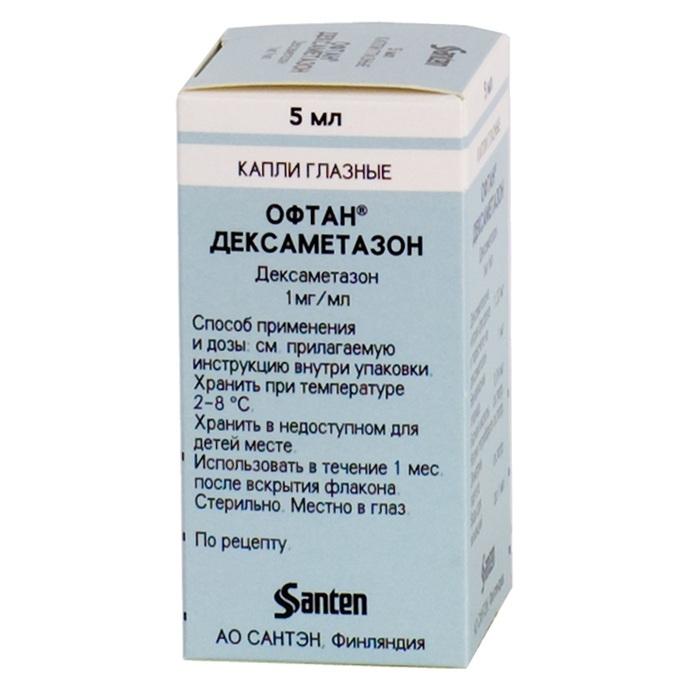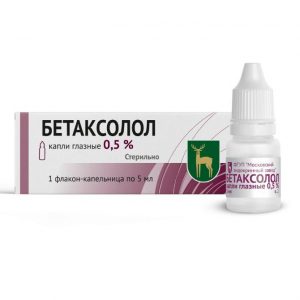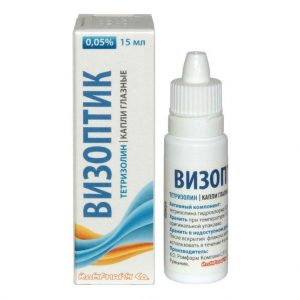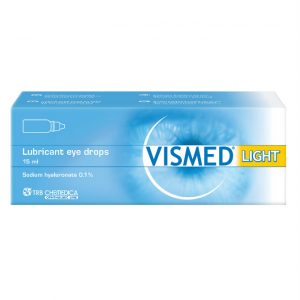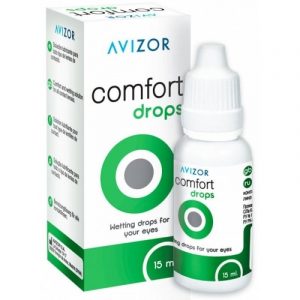Description
Latin name
Oftan Dexamethason
Release form
Oftan Dexamethasone. Eye drops.
Packaging
In a dropper bottle of polyethylene 5 ml drops. In packing 1 bottle dropper.
Indications
Acute and chronic inflammatory processes: – non-purulent forms of conjunctivitis, keratitis, keratoconjunctivitis without damage to the epithelium and blepharitis
– scleritis and episiscleritis
– iritis, iridocyclosis and other immune mechanisms) after complete epithelialization of the cornea
– inflammation of the posterior segment of the eye (choroiditis, chorioretinitis)
– sympathetic ophthalmia.
Allergic eye diseases: – allergic conjunctivitis or keratoconjunctivitis.
Prevention and treatment of inflammatory phenomena in the postoperative and post-traumatic period.
Contraindications
Keratitis associated with herpes simplex, chickenpox and other viral diseases of the cornea and conjunctiva.
Eye tuberculosis.
Mycobacterial infections of the eyes.
Fungal eye disease.
Acute purulent eye disease.
Damage to the corneal epithelium (including the condition after removal of a foreign body of the cornea).
Corneal epithelialopathy.
Increased intraocular pressure.
Glaucoma.
Age up to 18 years (due to the lack of data on the effectiveness and safety of the drug in children and adolescents under 18 years of age).
Hypersensitivity to the drug.
Use during pregnancy and lactation
To date, there are no clinical data regarding the use of Oftan Dexamethasone during pregnancy and lactation.
Oftan Dexamethasone can be used during pregnancy and while breastfeeding only as directed by the attending physician, if the expected therapeutic effect justifies the potential risk to the fetus and to the baby. The duration of therapy is no more than 7-10 days.
Composition of
1 ml of the preparation contains: Active substance: Dexamethasone sodium phosphate 1.32 mg (equivalent to dexamethasone 1.0 mg)
Excipients: Benzalkonium chloride 40.0 μg, boric acid 15.0 mg, sodium tetraborate 600.0 μg, disodium edetate 500.0 μg, water for injection up to 1 ml.
Dosage and administration of
In acute conditions, 1-2 drops are prescribed in the conjunctival sac every 1-2 hours.
After reducing inflammation, the drug is instilled in 1-2 drops in the conjunctival sac 3-5 times / day.
Duration of treatment should not exceed 2-3 weeks.
The decision on the duration of treatment is based on objective data, including the effectiveness of the drug, the severity of clinical symptoms and the possible risk of side effects.
Side effects
From the side of the organ of vision: after instillation, a fleeting burning sensation, allergic reactions are possible. With prolonged use, it is possible to develop secondary glaucoma and steroid cataract, as well as ulceration, clouding, thinning and / or perforation of the cornea, rarely – the spread of bacterial or herpetic infections. The drug contains a preservative benzalkonium chloride, which can cause eye irritation.
Drug Interaction
Interaction with other drugs is mainly due to participation in the excretion of dexamethasone from the CYP3A4 isoenzyme. Dexamethasone induces the CYP3A4 isoenzyme, thus reducing the efficacy of calcium channel blockers, quinidine and erythromycin. In the usual topical regimen, the dose of the drug is insufficient to cause induction or saturation of hepatic enzymes.
With prolonged use with iodoxuridine, an increase in destructive processes in the corneal epithelium is possible.
Overdose
Overdose with topical use of eye drops Oftan Dexamethasone is unlikely.
Symptoms: Possible local irritation.
Treatment: There is no specific antidote. The drug should be discontinued and symptomatic therapy prescribed.
Storage conditions
At 2 8 ° C.
Expiration
2 Year
dosage form
dosage form
eye drops
Santen, France
